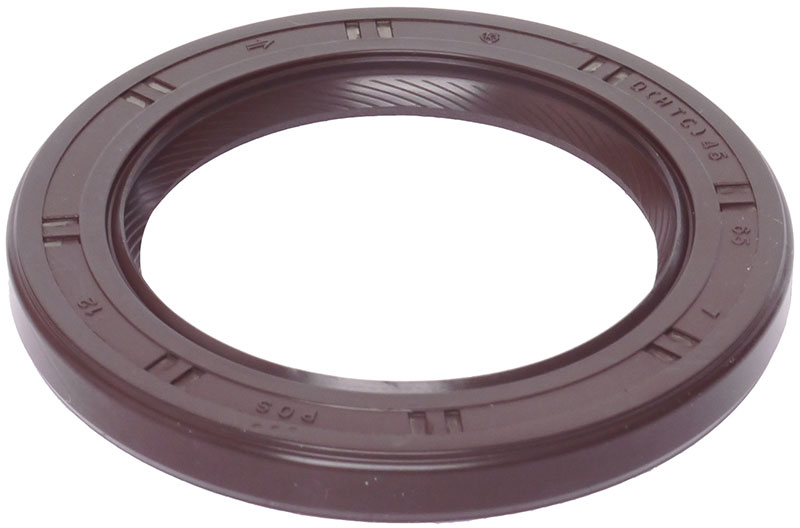
In Korean Daewoo engines, as in any other, there are sealing elements of the crankshaft - front and rear oil seals. Read all about Daewoo oil seals, their types, design, features and applicability, as well as the correct selection and replacement of oil seals in various motors in the article.
What is Daewoo crankshaft oil seal?
The Daewoo crankshaft oil seal is a part of the crank mechanism of engines manufactured by the South Korean corporation Daewoo Motors; O-ring sealing element (gland seal), sealing the engine cylinder block at the exit point of the toe and crankshaft shank.
The engine crankshaft is installed in the engine block in such a way that both of its tips extend beyond the cylinder block - a pulley for driving units and a timing gear are usually installed on the front of the shaft (toe), and a flywheel is mounted on the rear of the shaft (shank). However, for normal operation of the engine, its block must be sealed, so the crankshaft exits from it are sealed with special seals - oil seals.
The crankshaft oil seal has two main functions:
● Sealing the engine block in order to prevent oil leakage through the crankshaft outlet hole;
● Preventing mechanical impurities, water and gases from entering the engine block.
The normal operation of the entire engine depends on the condition of the oil seal, so in case of damage or wear, this part must be replaced as soon as possible. To make the right purchase and replacement of a new gland seal, it is necessary to understand the types, features and applicability of Daewoo oil seals.
Design, types and applicability of Daewoo crankshaft oil seals
Structurally, all the oil seals of the crankshaft of Daewoo cars are the same - this is a rubber (rubber) ring of a U-shaped profile, inside of which there may be a spring ring (a thin twisted spring rolled into a ring) for a more reliable fit on the shaft. On the inside of the oil seal (along the contact ring with the crankshaft), sealing notches are applied to ensure that the shaft outlet hole is sealed during engine operation.
The oil seal is installed in the hole of the cylinder block so that its groove is facing inwards. In this case, its outer ring is in contact with the wall of the block (or a special cover, as in the case of the rear oil seal), and the inner ring rests directly on the shaft. During engine operation, increased pressure is created in the block, which presses the oil seal rings to the block and shaft - this ensures the tightness of the connection, which prevents oil leakage.
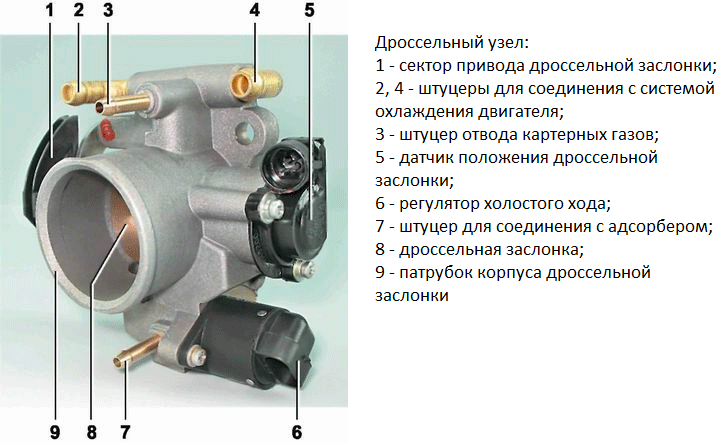
Rear oil seal in the crank mechanism of Daewoo engines
Daewoo crankshaft oil seals are divided into several types according to the material of manufacture, the presence of the boot and its design, the direction of rotation of the crankshaft, as well as the purpose, size and applicability.
Oil seals are made of special grades of rubber (elastomers), on Daewoo cars there are parts made of the following materials:
● FKM (FPM) - fluororubber;
● MVG (VWQ) — organosilicon (silicone) rubber;
● NBR - nitrile butadiene rubber;
● ACM is an acrylate (polyacrylate) rubber.
Different types of rubber have different temperature resistance, but in terms of mechanical strength and antifriction qualities, they are practically no different. The material of manufacture of the oil seal is usually indicated in the marking on its front side, it is also indicated on the label of the part.
Oil seals can have anthers of various designs:
● Petal (dustproof edge) on the inside of the oil seal (facing the crankshaft);
● Additional anther in the form of a solid felt ring.
Normally, most Daewoo crankshaft oil seals have a petal-shaped anther, but there are parts on the market with felt boots that provide more reliable protection against dust and other mechanical contaminants.
According to the direction of rotation of the crankshaft, oil seals are divided into two types:
● Right-hand torsion (clockwise);
● With left torsion (counterclockwise).
The main difference between these oil seals is the direction of the notches from the inside, they are located diagonally to the right or left.
According to the purpose, there are two types of oil seals:
● Front - to seal the shaft outlet from the toe side;
● Rear - to seal the shaft outlet from the shank side.
The front oil seals are smaller, since they seal only the toe of the shaft, on which the timing gear and the drive pulley of the units are mounted. The rear oil seals have an increased diameter, as they are mounted on the flange located on the crankshaft shank that holds the flywheel. At the same time, the design of oil seals of all types is fundamentally the same.
As for the dimensions, a wide variety of oil seals are used on Daewoo cars and other brands with Daewoo engines, but the most common are the following:
● 26x42x8 mm (front);
● 30x42x8 mm (front);
● 80x98x10 mm (rear);
● 98x114x8 mm (rear).
The oil seal is characterized by three dimensions: inner diameter (shaft diameter, indicated first), outer diameter (diameter of the mounting hole, indicated by the second) and height (indicated by the third).
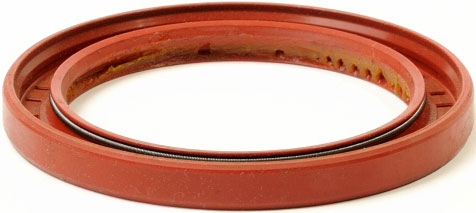
Daewoo Matiz
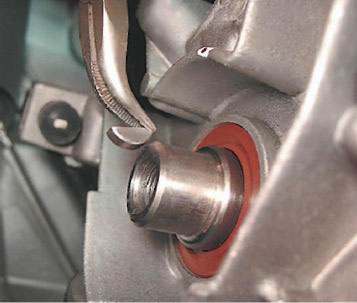
Rear Crankshaft Oil Seal View of the Front Crankshaft Oil Seal
Most Daewoo oil seals are universal - they are installed on several models and lines of power units, which are equipped with various car models. Accordingly, on the same car model with different power units, unequal oil seals are used. For example, on the Daewoo Nexia with 1.5-liter engines, a front oil seal with an inner diameter of 26 mm is used, and with 1.6-liter engines, an oil seal with an inner diameter of 30 mm is used.
In conclusion, it should be said about the applicability of Daewoo oil seals on various cars. Until 2011, Daewoo Motors Corporation produced several car models, including the most popular in our country Matiz and Nexia. At the same time, the company produced no less popular Chevrolet Lacetti models, and Daewoo engines were (and are) installed on other General Motors models (this company acquired the Daewoo Motors division in 2011) - Chevrolet Aveo, Captiva and Epica. Therefore, today Daewoo crankshaft oil seals of various types are used both on the "classic" models of this Korean brand, and on many old and current Chevrolet models - all this must be taken into account when choosing new parts for the car
Radial (L-shaped) PXX have about the same application, but can work with more powerful engines. They are also based on a stepper motor, but on the axis of its rotor (armature) there is a worm, which, together with the counter gear, rotates the torque flow by 90 degrees. A stem drive is connected to the gear, which ensures the extension or retraction of the valve. This entire structure is located in an L-shaped housing with mounting elements and a standard electrical connector for connecting to the ECU.
PXX with a sector valve (damper) is used on engines of a relatively large volume of cars, SUVs and commercial trucks. The basis of the device is a stepper motor with a fixed armature, around which a stator with permanent magnets can rotate. The stator is made in the form of a glass, it is installed in the bearing and is directly connected to the sector flap - a plate that blocks the window between the inlet and outlet pipes. The RHX of this design is made in the same case with the pipes, which are connected to the throttle assembly and the receiver by means of hoses. Also on the case is a standard electrical connector.
The right choice and replacement of the Daewoo crankshaft oil seal
During engine operation, the crankshaft oil seals are subjected to significant mechanical and thermal loads, which gradually leads to their wear and loss of strength. At a certain point, the part ceases to perform its functions normally - the tightness of the shaft outlet hole is broken and an oil leak appears, which negatively affects the operation of the engine. In this case, the Daewoo crankshaft oil seal must be replaced.
For replacement, you should choose oil seals that are suitable in size and performance - here the engine model and the year of manufacture of the car are taken into account. Special attention should be paid to the material of manufacture of the oil seal. For example, for vehicles operating in temperate climates, original FKM (FPM) fluororubber parts are suitable - they work confidently up to -20 ° C and below, while maintaining elasticity and wear resistance. However, for northern regions and regions with cold winters, it is better to choose MVG silicone oil seals (VWQ) - they retain elasticity up to -40 ° C and below, which ensures a confident start of the engine without consequences for the reliability of the oil seals. For lightly loaded engines, an oil seal made of nitrile butadiene rubber (NBR) will also be a good solution - they retain elasticity up to -30 ... -40 ° C, but cannot operate at temperatures above 100 ° C.
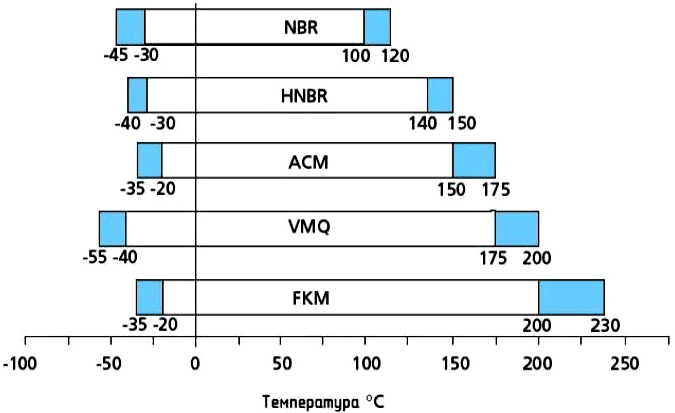
Heat resistance of crankshaft oil seals made of various materials
If the car is operated in dusty conditions, then it makes sense to choose oil seals with an additional felt boot. However, you need to understand that neither Daewoo nor OEM suppliers of such oil seals are produced, these are exclusively non-original parts that are now offered by some domestic and foreign manufacturers of rubber products.
Replacement of the crankshaft oil seal is carried out in accordance with the instructions for repair and operation of the corresponding engines and cars Daewoo and Chevrolet. Usually, this operation does not require disassembly of the engine - it is enough to dismantle the drive of the units and the timing (in case of replacing the front oil seal), and the flywheel with the clutch (in case of replacing the rear oil seal). Removal of the old oil seal is performed simply with a screwdriver or other pointed tool, and it is better to install a new one using a special device in the form of a ring, with which the oil seal is evenly inserted into the seat (stuffing box). On some engine models, replacing the rear oil seal may require dismantling the entire cover (shield), which is held on the block with bolts. At the same time, it is recommended to pre-clean the installation site of the oil seal from oil and dirt, otherwise new leaks and damage may quickly appear.
With the right selection and replacement of the Daewoo crankshaft oil seal, the engine will work reliably without losing oil and maintaining its characteristics in all conditions.
Post time: Jul-26-2023
